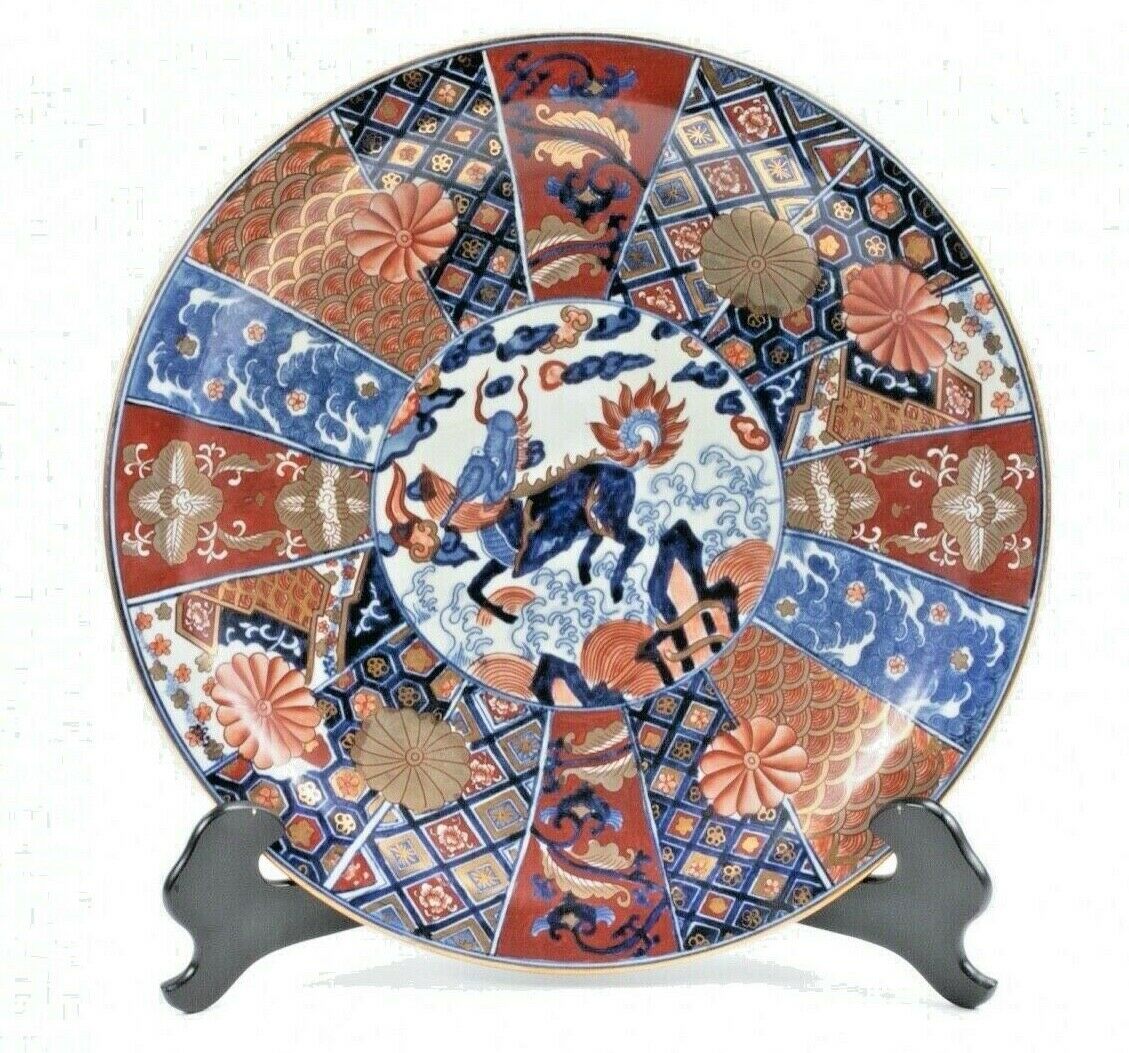-40%
Large Japanese IMARI Presentation Charger
$ 421.87
- Description
- Size Guide
Description
Up for Sale is a wonderful Large JapaneseImari
presentation charger
With gilt scalloped rim and polychrome painted geometric finish encasing a centralized image of a soldier on horseback or, more likely, some sort of deity or hero.
According to my research, it should date somewhere around the mid. 1800s.
There are only decorative markings and, since Western and US customs required maker marks on all exported pieces from the late 19th Century onward, I deducted that this might date from the previous era.
Accompanied with black painted plate stand.
Good condition with some light wear to gilt along the rim.
Measures 17" diameter
Very heavy but very beautiful!
What s fantastic item for your living space!
Please don't hesitate to ask questions.
Shipped via USPS Ground Mail.
We entertain fair offers and guarantee prompt shipping
Please visit our eBay Store for more:
Antiques, Collectibles, Home Decor Ideas, Pottery, Art & Prints, Books, Jewelry and Vintage Handbags
borgomio
History of Imari:
Imari porcelain can be Chinese or European in origin, but was first created in Japan. In the 17th century, the town of Arita became Japan's porcelain production center because it was near Izumiyama, a quarry rich in kaolin clay. The wares were then shipped to the West from the port of Imari, hence the name.
Imari featured images of cranes, fish, beautiful women, flowers and gnarled tree branches. These were the most popular images in Japanese textiles at the time. Pieces were under-glazed in blue first, with the blue used to delineate borders and backdrops. Afterward, other colors such as rust red, green, and gold were added and fired at a lower temperature.
Imari's iconic color combination proved to be very popular in Europe. English factories such as Royal Crown Derby, Minton, and Worcester produced their own versions of Imari. Other European factories included Chantilly in France, Meissen in Germany, and Holland's Delft factories. Chinese potteries also began to release high-quality Imari pieces for export, which flooded the market and drove up prices for scarcer Japanese Imari.















